
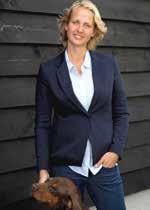

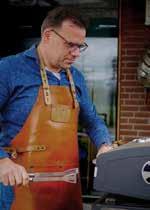
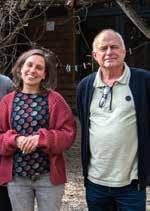






In 2022, the market for pigs was a turbulent one. Rising cost prices due to ever increasing feed, energy and fuel costs made for a challenging year and unstable market conditions. In 2023, new challenges and developments are now affecting us. These developments are creating many uncertainties within the sector. Despite all the challenges and changes, there is a need to maintain focus and to anticipate future developments.
In this edition of the VAEX magazine, we will zoom in on these market developments. We will bring them into focus and open a discussion.
European legislation on animal transport is being put under a microscope, with the ultimate aim of improving animal welfare during transportation. Lianne van Dongen, veterinary director at Vee&Logistiek, shares her valuable insights regarding the recent developments around livestock transport and regulations and the possible impact for the sector. Since 2018, Spain has regained its position as a major export destination for Dutch piglets. VAEX has developed a good network in Spain and provides a
structural solution to the import needs of the Spanish pig integrations. We join Robert Hoste to explore Spain as a market for Dutch piglets.
In Croatia, VAEX works with various organisations within the pork chain. In this edition, several experts from parties in the chain give their views on developments in the Croatian pig industry. A vet, a meat processor and a transporter.
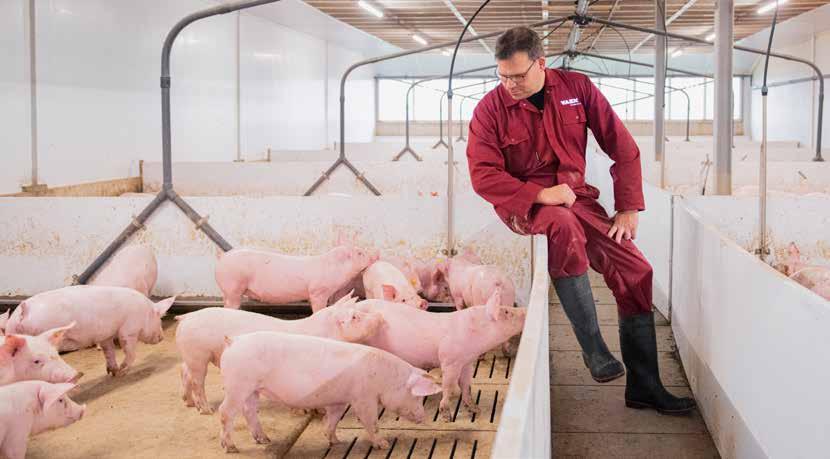
VAEX has even more in store in this edition. We will discuss the way in which VAEX invests in its people by training them internally, and you can see the 2022 figures at a glance.
Despite the challenges and changes coming our way, the VAEX team continues to look to the future. We will tackle these challenges head on and keep taking steps forward towards the future, in good times and bad. Onwards and upwards every day.
Dirk Govers, CEO
Since 2018, Spain has become the most important export destination for Dutch piglets after Germany. Contrary to expectations, this market has continued to grow. VAEX has developed a good in-country network and provides a structural solution to the import demand of the Spanish pig integrations. Dirk Govers: “Spain continues to import piglets for the time being, but is tightening quality standards for pigs ever further.”

Spain's rise as a destination for Dutch piglets began in late 2017. The import demand for foreign piglets grew because fattening pig production in this southern European country traditionally precedes an expansion in sow farming. Historically, Spanish integrations, in particular, wind down their need for foreign piglets over the course of a few years.
“This development cycle, which arises from a need for rebalancing, has been disrupted due to several factors,” concludes Dirk Govers, CEO of VAEX. “Animal diseases, efforts to reduce the use of antibiotics and eroding public support for the pig sector in Spain have all played a role. That is why Spain has grown into the most important market for Dutch piglets in recent years.”
His perspective is largely aligned with that of pig economist Robert Hoste from Wageningen Economic Research. “What has come into play is the disappointing exports of Spanish pork to China. The Chinese have quickly recovered from the impact of African Swine Fever on pork production, thereby reducing global demand. This has affected the sector’s growth opportunities in Spain.”
A decline in animal health has plagued the Spanish pig industry in recent years. The country acquired some highly pathogenic PRRS virus variants.
“Vaccines have been developed against Porcine Reproductive and Respiratory Syndrome (PRRS), but they are ineffec-
tive against the Bisbal and Rosalia strains. Sow farms that are infected with these strains are facing severe losses of piglets and the piglets that they do manage to raise perform worse as fattening pigs later on,” says Govers.
“The only solution is depop-repop: removing all sows and piglets, thoroughly cleaning and disinfecting the site and starting again with healthy sows. This costs a lot of time and money, and has reduced the number of productive sows in Spain,” explains the CEO of VAEX.
In 2022, Spain had some 20,000 fewer sows than in 2021, according to Eurostat figures. This means that they have a shortage of 560,000 piglets per year.
Not all Spanish sow farms opt for depop-repop, however, and are therefore left with underperforming technical results. The numbers and quality of piglets are dropping, which means Spanish pig farmers are dealing with decreased uniformity of litters and disappointing animal performance.
Govers expects it will take the Spaniards several more years before they will be able to get this disease under control. “In addition, farmers are also highly fearful of bringing in African Swine Fever. The hygiene requirements at Spanish farms have been tightened and imports of piglets are subject to increasingly stricter inspections.”
According to Govers and Hoste, another issue putting pressure on domestic pig production in Spain is the European ban on the medicinal use of zinc and the restriction on the use of medications. “Management errors at pig companies are less easy to correct without the use of antibiotics,” they explain. “Also, new expertise must be acquired over a longer period of time and involves a lot of trial and error.”
An important factor that may well mean that Spain continues to regularly import piglets in the long term is the declining public support for an expanding pig stock. “Obtaining permits for new companies is becoming trickier and is stunting the development of the Spanish pig sector,” says the CEO of VAEX. “There is also resistance to the implementation of expansion plans.”
On the other hand, Hoste believes there is significant overcapacity in the Spanish meat industry. “From the processing side, there is structurally high demand for fattening pigs. As a result, there is also a need for piglets."
The Spanish pig sector benefits from the fact that it is relatively cheap to build and expand in scale. Govers: “By build-

ing simple barns, Spaniards accept that they will achieve average technical results. They focus on volume production.”
However, even in this area there is a visible swing towards sustainability and increased animal welfare. "In particular, Spanish sow farms are investing in better quality and more spacious stalls, so the practice of tail docking can be brought to an end. Finding workers is becoming a more pressing issue there as well, which means greater attention is being paid to improving the ease and efficiency of work,” says Hoste. Govers: “This offers opportunities for Dutch sow farmers if they can supply good piglets with intact tails.”
For medium and long term exporters of Dutch piglets to Spain, everything is far from plain sailing. “Europe is discussing new guidelines for long-distance livestock transportation. At the moment, it is unclear how this will impact exports of piglets from the Netherlands,” says Govers. “It is also unclear whether piglets will still be permitted to be transported during heatwaves. This could threaten our ability to serve this attractive market year round.”
The shrinking sow farming industry in the Netherlands, Germany and Denmark may also affect the Spanish pig sector. Govers and Hoste expect the total piglet production to decrease, which means fewer piglets will be available to export markets. Sow farms must also adapt their scale to be able to deliver large litters. In addition, the location of the exporting breeding farm is important, as the piglets must be delivered to the Spanish barns within one day.
"Spanish integrations have to start paying at the level of Germany to continue attracting Dutch piglets. But if you make agreements with Spanish buyers, you can trust that they will follow through on them. To maintain continuity in sales, you need to supply healthy boars and gilts with a Piétrain as a terminal boar,” says Govers. “At the moment, the piglets from the best Dutch sow farms are transported to Spain. It used to be the opposite. The Spanish pork sector is evolving into a quality market.”
While some 200,000 Dutch piglets were exported to Spain in 2016, that number grew to 316,000 piglets in 2017. After that, piglet exports from the Netherlands took off. In 2018, almost one million piglets were transported to Spain, a growth of over 300 percent. In 2019, export growth waned, but nevertheless 1.05 million Dutch piglets were bought by the Spanish market. The peak in the demand for imports in Spain demand seemed to have been reached, but piglet exports from the Netherlands picked up again in 2020, rising to 1.30 million. Recording breaking exports were also achieved in 2021 (1.55 million) and in 2022 (1.70 million). “That’s a lot of piglets. The Netherlands fulfils 90 percent of the Spain's total piglet imports,” says CEO Dirk Govers of VAEX. “That is just 3 percent of the total Spanish piglet production. If the performance of the more than 2.6 million Spanish sows improves by one piglet per year, the demand for imports will disappear.”

Many developments are taking place in the area of animal transport and legislation, with the ultimate aim of improving animal welfare during transportation. Together with Lianne van Dongen of the industry association Vee&Logistiek Nederland, we take a close look at developments in livestock transport and regulations. Lianne is the veterinary director at Vee&Logistiek Nederland and her main area of focus is on the export of breeding livestock within and outside of the European Union. This includes the realisation of new binding export certificates or adapting the export certification already in existence. She also focuses on influencing entrepreneurs in the industry to become more climate positive. And she informs politicians, the government and society about the purpose of exporting livestock to third countries.
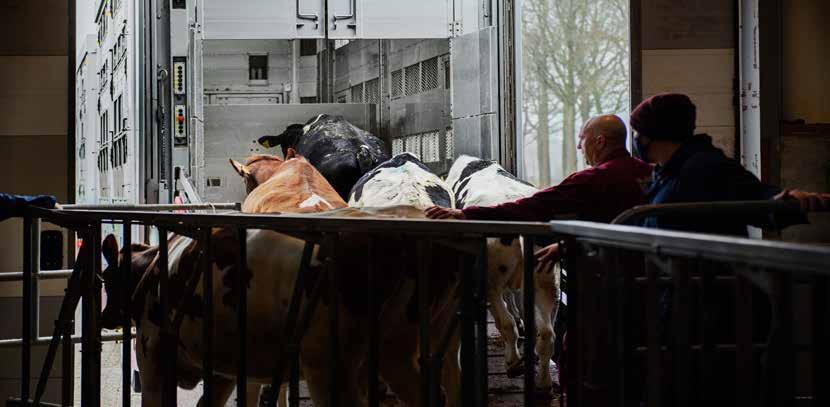
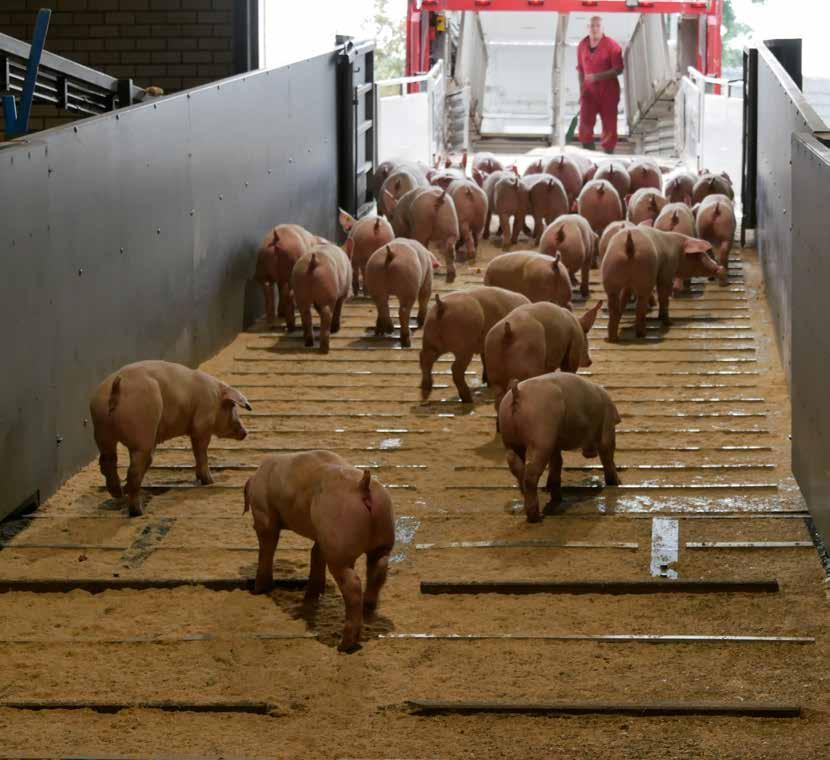
The European Animal Health Regulation (AHR) came into force on 21 April 2021. The rules within this regulation aim to prevent the outbreak of diseases within the European Union and curb their transmission. In addition, certain welfare rules for the transportation of livestock must be followed. These rules are imposed throughout Europe by the transport regulation (Regulation (EC) No. 1/2005). The rules vary per species and depend on the transport distances involved. Most rules apply to cattle, sheep, goats, pigs and horses (registered and unregistered).
The regulation stipulates, among other things: how animals must be handled, when animals are not suitable for transport, how vehicles must be equipped and which travel schedules must be adhered to.
“The European Commission is currently working on amending European animal welfare legislation including the transport regulation,” veterinary director Van Dongen explains. “The European Commission is expected to submit a proposal to amend the transport regulation by the end of 2023. The proposal must then pass through the European Council – in which the Member States are represented – and the European Parliament. The recommendations now adopted by the European Parliament form the European Parliament's contribution to the negotiations around the European Commission's proposal.”
An advisory group of the European Parliament made up of animal welfare parties (EFSA) has drafted a report with recommendations on standing heights, loading factors and temperature limits that are a lot stricter than the standards currently in force. “In the lead up to the new transport regulation, this is giving rise to many concerns and a great deal
of discussion,” says Van Dongen. “These developments could have very big implications for the industry.”
They could involve limiting transport times, banning exports to third countries, cameras to monitor the loading and unloading process, transporting semen or embryos instead of breeding stock and transporting carcasses and meat instead of livestock for slaughter. These are a few examples of the recommendations described in the report. It also advises that national authorities should only permit transportation to take place when outdoor temperatures are forecasted to be between 5°C and 30°C. In addition to temperature monitoring, humidity and ammonia levels would need to be measured in the vehicles. Some of these proposals have been rejected and some are still under discussion.
As for transporting semen or embryos instead of breeding animals, and meat instead of slaughter animals, MEPs are calling on the European Commission to provide an action plan to support this transition by the end of 2023. Vee&Logistiek Nederland does not support this transition and, together with other Member States, is submitting counterarguments to the European Commission.
Amendment to regulations on export certificates to countries outside of the European Union.
Major changes are coming to the export of livestock to nonEU countries. From 1 January onwards, binding bilateral export certificates will no longer be issued due to the tightened regulations. Exporters of livestock in the categories of pigs, cattle and small ruminants will revert to the harmonised agreements of the European Commission as of 1 January 2024. These agreements apply to the countries of Moldova, Armenia, Russia, Belarus, Kazakhstan and the United Kingdom. For other countries like Albania and Serbia, there will be a transition period of a few weeks starting from 1 January during which livestock can be transported using request certificates. How exactly the use of request certificates will work for the sector is going to be discussed and clarified with the government over the coming months.
Industry association and chain partners put their heads together
Vee&Logistiek Nederland has acted jointly through UECBV (The European Livestock and Meat Trades Union) and with Dutch chain partners to influence the European Parliament. Key components were the age of unweaned animals, exports to third countries and transport duration. In addition, this included a call for the setting of new standards to be based on the scientific background. “We continue to apply pressure to influence the proposals of the European Commission,” says Van Dongen. “The lobbying consists of sending letters from the UECBV to the European Commission. But also by responding to questionnaires from the European Commission and the Food Safety Authority (EFSA), by citing research that supports our position and by providing practical input in the working groups of the European Commission.”
Current European transport legislation forbids the transportation of livestock when outside temperatures are higher than 35 degrees Celsius. Transporters take measures in extreme conditions. These may include, for example, adjusting load rates and/or postponing transports. In the event of extreme heat, the industry protocol comes into force. This protocol provides guidelines for transporting livestock in extreme temperatures.
The long-distance transportation of livestock is under fire for various reasons, including ethical, animal welfare and environmental concerns, though transporting livestock over long distances is still important. Veterinary director Van Dongen explains the importance of long distance livestock transportation in four key points.
1. In order for countries to eventually be self-sufficient in their own dairy and meat production, it is necessary to export animals to those countries. It takes several years to get the foundations of a farm in place, and expansion is sometimes also necessary.
Lianne van Dongen Veterinary director Vee&Logistiek Nederland
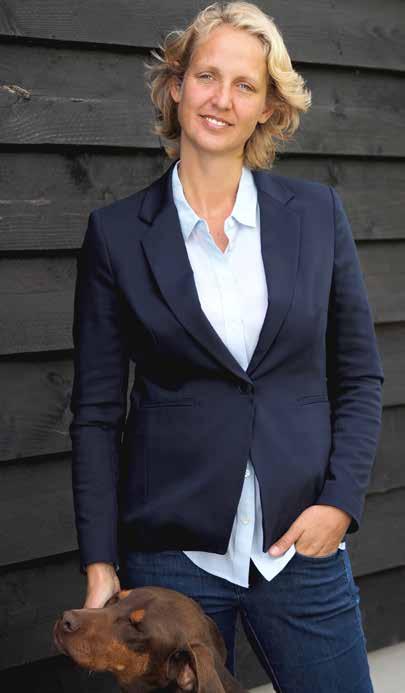
2. Dutch dairy cattle are known worldwide for their good quality. They convert relatively little feed into quality milk and thus also have a relatively low footprint. There is also a wealth of other knowledge and products that exist as a direct consequence of this cattle. For example, barn construction, animal husbandry knowledge and also semen and embryos.
3. Directly and indirectly, they contribute to the livelihoods of farmers in these countries. The associated dairy and meat sectors provide employment. Raising the quality of local production also helps reduce inequality between countries, regions and sexes.
4. And finally, encouraging local production ultimately results in a shorter circle, which contributes to tackling the climate challenge.
Every day is a new opportunity to better yourself. Personal development is a main priority at VAEX. We set the bar high and want to get the best out of the trade, the organisation and ourselves. Learning, improving and growing. There’s a reason we say: Onwards and upwards every day. It’s this philosophy that led us to develop the internal training programme ‘Zicht’ three years ago, the focus of which is on personal development. Henk Swinkels and Ineke Verheijen are responsible for organising this training programme. Together with them, we will take a closer look at the training programme and internal training.
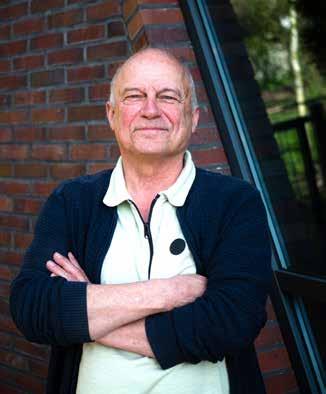
Henk has been closely involved with VAEX for 18 years. He advises both VAEX Pigs and Cattle trade and VAEX The Truck Traders In addition, Henk is a member of the management team of VAEX The Truck Traders. Three years ago, an internal training programme called ‘Zicht’ was introduced. Henk developed the training programme in collaboration with Ineke Verheijen.
Ineke is a behavioural scientist and her expertise complements Henk’s perfectly during the training process. During the programme, Ineke acts as an impartial voice, as she is not internally involved in the organisation. She focuses on behaviour, conversation building and, among other things, draws up a personal development plan with the participants.

“It’s so much fun to do”
"For the past three years, we have been responsible for the internal training programme," Henk explains. “I have been involved in VAEX for many years and at some point Ineke also became involved with VAEX in her role as a behavioural scientist,” says Henk. “At that time, VAEX was looking for the right training programme to support staff in their personal development. So I started looking for suitable training courses,” Henk says. “However, at the time I could not find a programme that was a good fit for VAEX's needs. And that’s how we got the ball rolling,” says Henk.
“VAEX gave Ineke and me the go-ahead to start working on developing a training programme ourselves.” And the rest is history. “We pooled our expertise and investigated how we could best design the programme,” says Henk. Developing it took quite a bit of time and after several months and lots of opportunities for feedback, the training programme ‘Zicht’ was born. The programme has now been running for three years. Two groups have completed the training and our third group is currently taking part in the programme. As a result of the good feedback we have received about this training programme, we are now providing training for other organisations.
“It’s neither totally abstract nor something concrete like a bookkeeping course”
This programme is all about personal development. The training will accelerate your personal development. What
“You gain a better understanding of yourself and realise that other people may see you differently than you see yourself. This was a real eye-opener for me and can be rather confronting.”
“What was really interesting for me was learning that you need approach conversations with different types of people in different ways. Taking into account their personalities and characteristics in order to get the best outcome.”
“During the programme, our group consisted of 4 or 5 participants. I liked that we were a small group because the programme is rather personal.”
you normally learn at a steady pace within four to five years in terms of personal development, we try to achieve in one year with this programme, by offering sufficient training and tools in a short period of time. “It’s neither totally abstract nor something concrete like a bookkeeping course,” says Henk.
From start to finish, all modules focus on personal development. From the assessment to the personal development plan and the role plays. The training programme also includes a company-specific assignment, which makes it possible to apply the knowledge you gain in practice.
We start the training programme with a kick-off day. A day of activities that require you to work together and step out of your comfort zone. “It’s only by taking someone out of their comfort zone that you see what they are really like,” says Ineke. “You can then observe the dynamics in the group or if someone is stressed, for example. In addition, the participants begin to interact during the kick-off day. They have to work together and spend the day with one another. This allows us to observe the participants. What is happening, who is taking charge and who is taking a more passive role? It’s a very valuable day for both the participants and ourselves,” says Ineke. “It means that we can immediately form a good picture of all the participants and observe how they handle various situations. And for the participants themselves, it creates shared memories that they can look back on throughout the entire programme. A shared memory doesn’t have to be anything

spectacular, it can also involve something small. The point is that it is something you can always look back on together, which creates connection in the group.”
After the kick-off day, there is an assessment. In this part of the training, the focus is on self-knowledge. After this assessment, you will have a more effective insight into your own strengths and weaknesses and will learn about yourself by working with others. Step two is creating a personal development plan, in which you set the goals you are going to work on during the rest of the training. “Since these goals are personal and may vary per training programme, we adapt the training to these goals from this point onwards,” explains Henk.
How do you assess others and how do they assess you? This is an important aspect of the training: to quickly assess what type of person you are speaking with and respond accordingly. “You don't have to become a chameleon, but you can learn to understand how the other person thinks,” says Henk. This can help you in your conversations. We practise this using clips from Dutch reality show “Boer zoekt vrouw” (“The farmer seeks a wife”), but also through role playing. In this way, you can make an assessment of the person you are talking to within two to three minutes. You learn to discern whether someone is more dominant or people-oriented, for example. By becoming aware of yourself at this stage of the training, you discover whether conflicts may arise and how you can prevent them.
“In addition to the ‘Zicht’ training, we also held a sales day in November 2022,” explained Henk and Ineke. This day aimed to give everyone in the sales department the opportunity to get to know one another.
The sales managers come from different countries, speak many different languages and not everyone had actually already met in real life. The day was all about connection, safety in the group and pushing boundaries together.

When you place the focus on improving the areas in which you are weakest or have no affinity with, you become average. “The idea behind this training is that you do what you are good at and get even better at it,” says Ineke. It can be a real eye-opener to realise that it is better to excel at what you are good at, rather than working on things that are contrary to your nature.
“With this training programme, we are not training staff to become better VAEX employees,” explains Henk. But working on personal development will ultimately have a positive knock-on effect on the work at VAEX. Self-knowledge, communication, culture and leadership are key components of the training programme. These facets can have a very positive impact on day-to-day operations.
In addition, participants feel more connected to each other, as they have the shared memories they gained during the training. This in itself can positively affect the communication between staff members within the organisation.
4,895
PIGLETS Purchased per country
BREEDING CATTLE Purchased per country
HEIFERS Sales per country
AR - Armenia, BE - Belgium, BA - Bosnia,DE - Germany, DK - Denmark, ES - Spain, HR - Croatia, HU - Hungary, IQ - Iraq, IT - Italy, KZ - Kazakhstan, LB - Lebanon, NL - Netherlands, OT - Other, AT - Austria, PL - Poland, RO - Romania, RS - Serbia, RU - Russia, SI - Slovenia, BY - Belarus
The world of livestock and meat in which VAEX operates is dynamic. In a series of articles, three different leading figures who are active in the Croatian meat production market share their views. What developments, opportunities and threats do they see in their field of work? We will take a detailed look at preventive and curative animal health, transport and slaughter within the Croatian market.
 Petason d.o.o.
Petason d.o.o.
Sedlic Veterinary Practice is a practice that treats farm animals and pets, both large and small. A few of our clients are farms for which we provide veterinary services. Our main focus is on animal health and welfare. We support farmers with issues such as nutritional problems and everyday challenges that arise with animals on farms.
As veterinarians, we understand that our role must extend beyond merely treating individual animals. We work closely with farmers to address nutritional issues and provide support for holistic animal health. By providing expert advice, carrying out routine examinations and implementing preventative measures, we contribute to the wellbeing of the animals.
Domestic livestock production in Croatia is facing certain challenges. Many are turning to imports to bring in good genetics and thereby solve these problems. This is leading to a rise in international transport. Although this is good for trade, it also results in an increased risk of exposure to new diseases. To mitigate these risks, it is essential that farmers and veterinarians work closely together. By implementing good health protocols and sharing knowledge, they can minimise potential damage and safeguard animal health.
However, the good climate and favourable weather conditions still offer some farms the potential to produce cheap, good quality feed and keep their heads above water. These farms play a crucial role in maintaining domestic livestock production and ensuring the country's food security.
Veterinary practices, are however facing an uncertain future. Some livestock farms will shut down, and others will focus more on agriculture. These days, young veterinarians often end up working at pharmaceutical companies or animal feed manufacturers instead of veterinary practices.
It is crucial to recognise the role of veterinarians as valuable advisers and partners in promoting animal health, ensuring food safety and maintaining a sustainable livestock sector. If we work together, we can overcome any challenges, find innovative solutions and create a resilient future for both animals and farmers.
Name: Domagoj Soski
Position: Vet Company: Sedlic Veterinary Practice
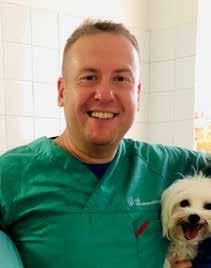

Agro Tubic was founded in 2009 by myself, my father Franjo Tubic and my brother Zdravko Tubic. As of 2022, I, Ivan Tubic, have been the sole director of the company. Agro Tubic specialises in livestock transportation and is based in Croatia. But we also transport livestock across the whole of Europe. We are also involved in purchasing and selling livestock, both for import and export. Our business partners are mainly located in Southeast Europe. But also in the Netherlands, where we partner with VAEX.
Like many other companies, Agro Tubic has dealt with challenges due to the COVID-19 pandemic and inflation. The livestock trade industry has been greatly affected by the pandemic. Rising commodity prices have also led to higher feed prices and increasing costs for organisations within our industry. But as long as demand remains high, we will continue to be optimistic about the future.
There are also opportunities for growth and development in the future. We currently have seven trucks transporting livestock for our company. In the future, we want to expand our fleet to ten trucks. This expansion of our transport activities will create further employment and will also allow us to optimise our services. In addition, we are seeking to expand our trade activities, to enter new markets and achieve growth for Agro Tubic.
Given the developments in livestock transportation and the regulatory changes currently in progress, it is necessary to continue investing in ongoing improvement. We do this by optimising processes, investing in new vehicles and minimising potential errors during journeys. Improvement is high on our list of priorities.
With its focus on improvement, investment in the latest vehicles and strong cooperation with partners such as VAEX, Agro Tubic continues to look ahead to the future with confidence.
Name: Ivan Tubic
Position: Manager & owner
Company: Agro Tubic

Did you know that VAEX has a large presence in the Croatian market and in the former Yugoslavian countries. For VAEX, these countries are important markets for piglets, slaughtered piglets and blue crossbred heifers, among others. But these countries are also good buying channels for slaughter pigs for VAEX. For this, VAEX
works with the transporter Agro Tubic to ensure that all its transport needs are handled smoothly.
All in all, the Croatian market is very dynamic and VAEX is already active there. Our sales representative for this region is Mike Cornelissen, mike.cornelissen@vaex.nl, +31 6 11 44 77 87
With more than 30 years of experience, Petason d.o.o. has experienced impressive growth and has become one of the biggest players in the meat industry in Croatia. In the early days, our focus was mainly on live animal trading. A few years later, however, as the market developed and demand grew, we took an important step forwards by founding our own meat processing plant. Ever since, we have continuously invested in new technologies and talented staff
As a company based on the Adriatic coast, we benefit from the growth of the tourism industry in Croatia. This is particularly important for the food industry and puts us in a unique position to offer our products to a growing market.
Name: Darko BokanPosition: Board member & Head of purchasing
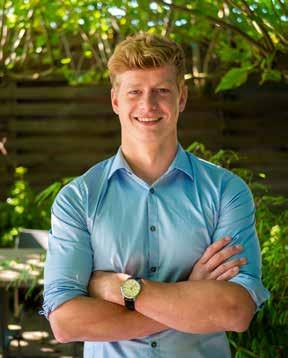

Company: Petason d.o.o.
The future of the meat sector looks promising, especially in traditional markets such as Croatia. Meat remains an important part of the food industry and every dining table. As members of the meat industry, we have the opportunity to contribute to movement towards self-sufficiency in the meat industry in Croatia. This is a long-term process. At the moment, Croatia is only self-sufficient in beef and is dependent on imports for all other types of meat. So there is ample opportunity for Croatia to develop itself in this regard and to become more competitive on a European level. With the right investments and efforts, we hope to contribute to this.
Opportunities are all around us, but we need to seize them in time. Petason d.o.o. embraces new trends and directions, while maintaining a particular focus on animal welfare. We believe this is key to creating good, safe supply chains and traceability systems, and preventing problems that may occur on the road. Since Croatia joined the European Union, Croatian producers have access to a whole new world, which signifies a big step in the globalisation process of our meat industry.
Of course, there are also challenges. Since our accession to the European Union, Croatia has experienced a significant outflow of labour. Finding qualified staff is currently one of our biggest challenges, as it is in the rest of the Western world. Nevertheless, we continue to invest in our employees because we believe they are essential to the success of our company.


“WHAT I LOVE ABOUT WORKING IN THE LIVESTOCK TRADE IS SEEING CUSTOMERS’ SATISFIED FACES”
Our agent Vyacheslav Rai (36) from Belarus has been a member of the VAEX family for some time. Vyacheslav first came into contact with VAEX in 2016 and has been with us ever since.
Vyacheslav began by selling equipment for the dairy industry, and later expanded his activities to become a cattle supplier to dairy farms in cooperation with VAEX.
My working day starts at 5am every day. Why does it start so early? Well, besides trading cattle in partnership with VAEX, I sell equipment for the dairy industry together with my business partner. To achieve this, we work with suppliers in China. Due to the time difference between China and Belarus, we need to get an early start.
Every day, I drive many kilometres. Sometimes I cover around 800 to 1,000 kilometres in a day, which might include visiting farmers and livestock complexes. As we have a large customer base, I make frequent visits. Personal contact is an important part of my work, so travelling such distances is par for the course.
I often make trips to the Netherlands or Germany to accompany customers when selecting cattle deliveries. Selecting cattle online or on-site is an important part of cattle deliveries to Belarus. Why? Because these are breeding animals, so it is very important that the animals are approved by the buying party. In addition, in Belarus, it’s mandatory to make a selection on site. There is always a government veterinarian present to approve the animals for quarantine.
What makes the Belarusian market very difficult to navigate are the strict measures regarding animal imports. A lot of analysis is required when importing animals. You must meet certain breeding values and lots of documents are involved
in almost every delivery. In spite of that, I always do my utmost to comply with the rules, so we can deliver healthy and very productive animals to our customers.
“A stable and reliable partner“
Problems with other suppliers forced us to look for a new supplier, and that's how I ended up with VAEX. I am mainly in contact with Ilona Mioulleri from VAEX and, together with her, I coordinate all cattle deliveries. Together, we ensure that all the documentation is in order for the delivery. We are on hand to make sure that communication goes well, since there is a language barrier. Thanks to the quality of the cooperation with VAEX and our reliable partnership, we now work exclusively with VAEX and will continue to do so.
MinskDutch suppliers visit customers in Spain together with our sales representatives Gert Posthouwer and Dirk Govers. These suppliers deliver to Spanish buyers, so we took them to meet these buyers. The aim was to show them how things are done over there and see what the final destination of their piglets looks like. And, of course, to get to know the people who are buying the piglets. Watch the video for a summary of our trip to Spain.
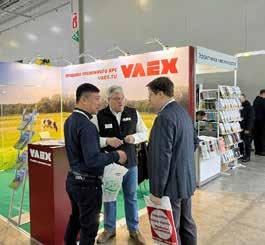

Each country is different and has its own language, regulations and culture. We are aware of the borders that separate countries from each other, but above all, see them as an invitation to explore what lies beyond. And to make what lies beyond them our own. Which is why we visit or organise various events throughout the year, across Europe and even beyond. Let’s look back on the year's events so far!

It doesn’t matter what position you hold at VAEX, we believe that it's important for everyone to know what is going on in the field. That is why our new colleagues were given a tour of the barns at Quality4Pigs. We wanted to give them the opportunity to learn about animal husbandry and see how things work in the livestock sheds. In our view, this is an essential part of the onboarding process!
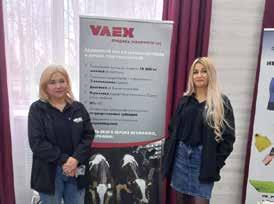

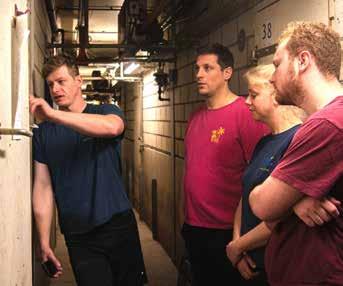
Our colleague Mike Cornelissen, who grew up among piglets, provided the tour. He told us all about the animals, feed, livestock sheds, transport and much more. All in all, it was a very educational day!
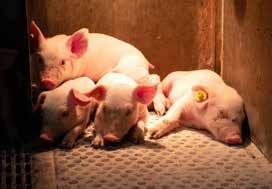
Dmitry Gongadze has represented VAEX in Russia since 2013. 2023 marks the 10th anniversary of the collaboration between VAEX and Dmitry Gongadze.

What makes Dmitry's work so enjoyable? “The moment when the animals arrive at the customer’s farm. It’s fantastic! Unloading the truck, seeing the animals arrive healthy and witnessing an empty livestock shed coming back to life. It’s a beautiful and almost magical moment. The birth of new life. That’s what I love most about my work. In addition, I work in a good team, with people who work hard, always think in terms of solutions and are also just great people to work with.”
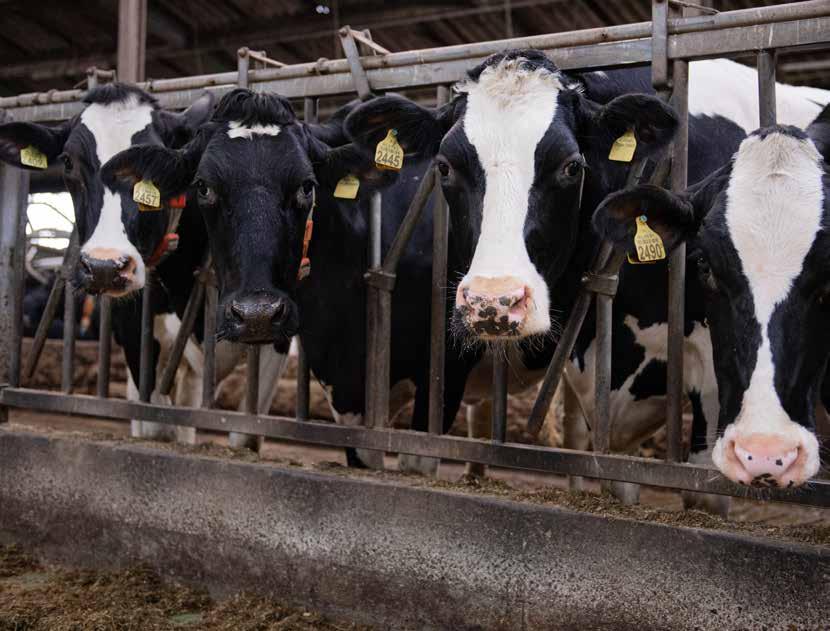
Did you know that you can view our current demand and supply every day?
You didn’t? In that case, take a look here: Details of the latest demand and supply is listed here every working day!
www.viavaex.com
Prefer to receive it by e-mail?
If so, please register by visiting:
www.vaex.nl/signup


Number of persons: 4
• Young pork rack
• 70 g of curing salt
• 2 litres of water
• 3 sprigs of rosemary
• 2 cloves of garlic
• Butter
• Pepper
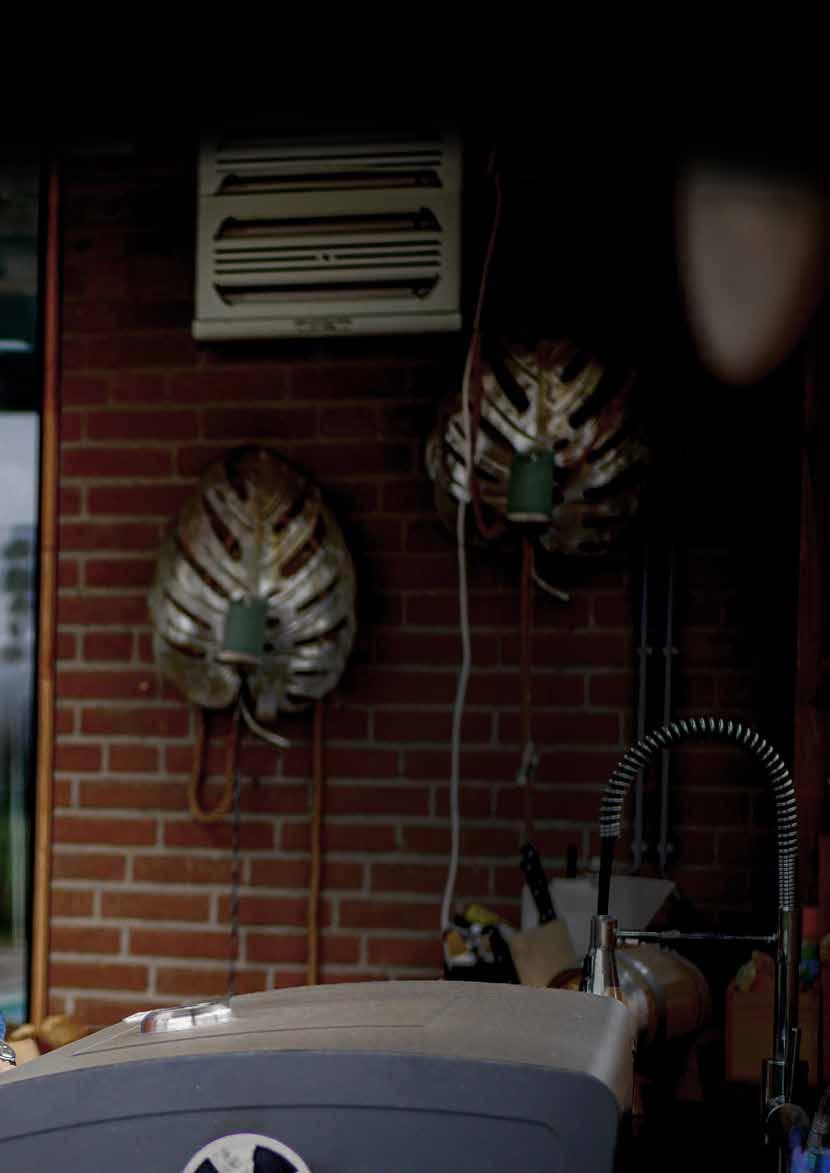
• Salt
Brine the meat a day in advance. Mix the curing salt with the water and submerge the meat in this brine. Leave in the fridge for 24 hours.
Remove the meat from the brine and rinse well. Pat dry with a paper towel and season the meat with salt and pepper
Using kitchen twine, tie the sprigs of rosemary around the meat. Then fry the meat in butter and at the last minute add a clove of garlic. Make sure it doesn’t burn and spoon the butter over the meat.
Remove the meat from the pan and cook in the oven at 165 degrees until it reaches a core temperature of 61 degrees. Leave it to rest for 5 minutes and then slice!


EU-recognised stopping points for animals, also known as resting stables, are special facilities that are designed to provide places for animals to rest while being transported long distances between countries in order to improve animal welfare. These stopping points are mandatory for livestock trucks that are travelling for longer than one day and offer a safe and comfortable environment for the animals to rest, eat and drink before continuing on their journey. Since September 2009, VAEX has owned Anhoka Kft. This is a stopping point for animals that is situated in the south of Hungary.
A safe and comfortable environment for animals
Anhoka is an EU-recognised stopping point for piglets, pigs, sows and calves. Anhoka is equipped with facilities for food, water and veterinary care if needed. In the resting stable, the temperature and humidity levels can be controlled to protect the animals against extreme weather conditions. In addition, the resting stable has newly fitted dividers that allow the animals to rest separately per truck. The stable can accommodate around 3,000 piglets at a time.
Several facilities are available on site such as a wash bay for cleaning and disinfecting livestock trucks and a weighbridge. But also an office with living quarters and a canteen, where drivers can use sanitary facilities. And there is plenty of parking space for the trucks.
The stopping point is located in Kiskorpad, a small village approximately 10 kilometres west of Kaposvar in the south of Hungary. Logistically, this is an excellent position for transports to the southern Balkan countries and countries such as Romania, where many piglets are supplied from Western Europe.
Long journeys to countries in Eastern Europe
VAEX makes many long journeys to countries in Eastern Europe. That is why, a few years ago, the company decided to build its own stopping point in the south of Hungary. Anhoka Kft. was opened in September 2009 and the resting stable was completely renovated at the end of 2014.
In accordance with the current transport guidelines, long-distance transports from Western to Eastern Europe lasting more than a day must include a rest stop. Anhoka is an excellent location for this. Not only in terms of location but also in terms of the amenities it offers. This means that VAEX can maintain the quality and health of the animals during its own transports. In addition to our own transports, all transporters are welcome to make use of the facilities at Anhoka.
Scan for the video
 Kiskorpad
Kiskorpad

